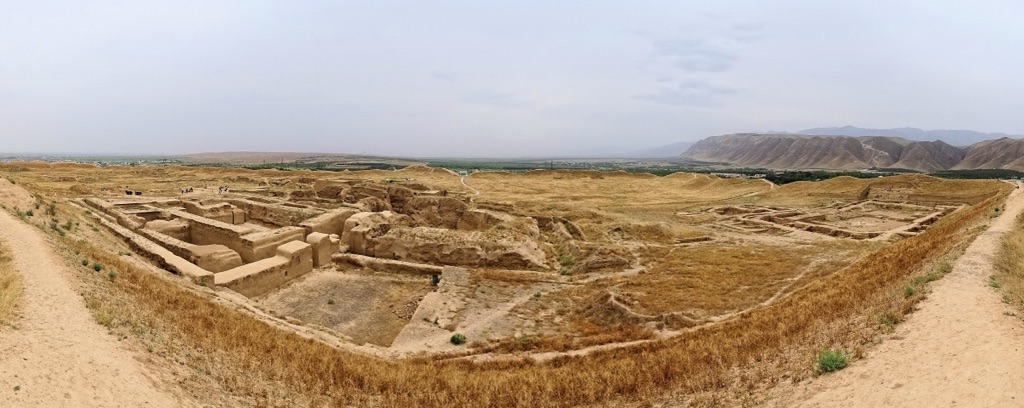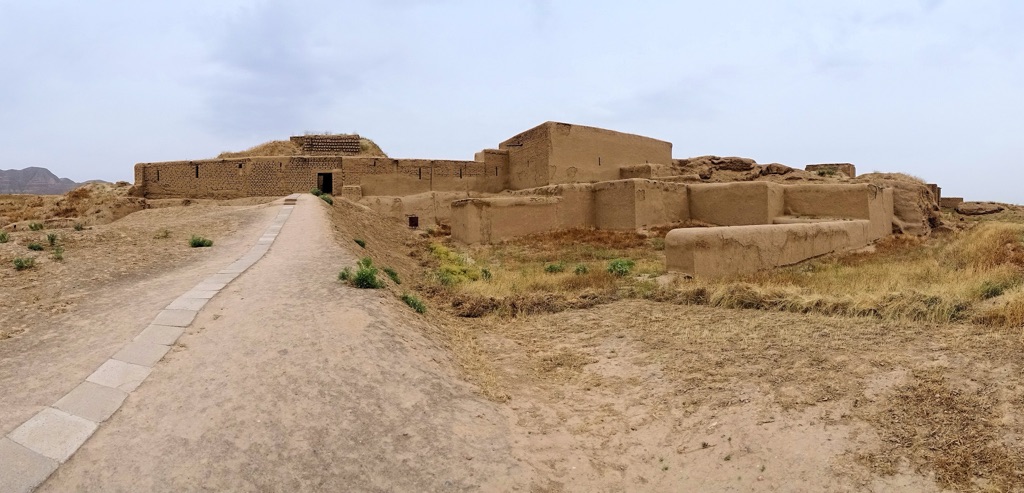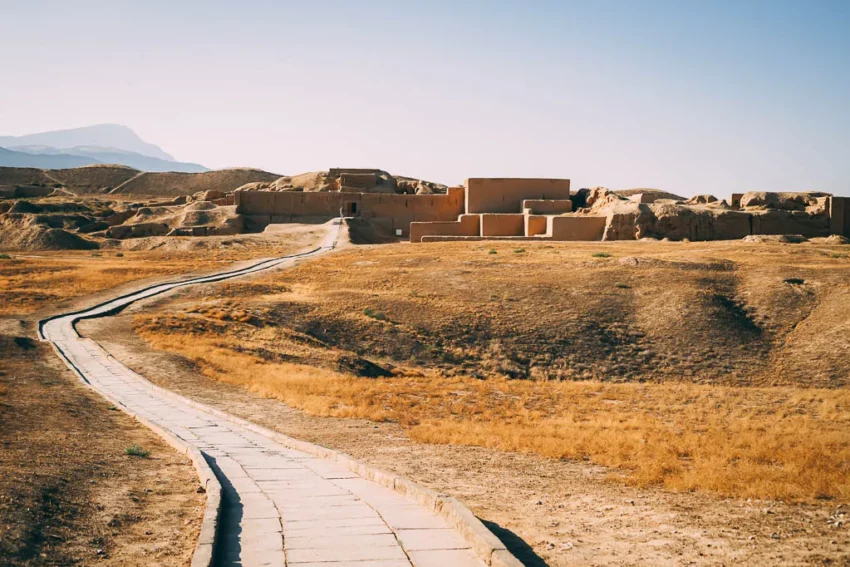Old Nisa was an ancient city located at the foot of the Kopet Dag mountain range. It served as the capital of the Parthian Empire, which dominated the region from the mid-3rd century BC until the 3rd century AD. The site includes the fortress of Nisa, which is one of the earliest and most important cultural and historical sites in Central Asia. It was here that the Parthians established one of their earliest capitals. The ruins of Old Nisa reveal grandiose structures, with remnants of a powerful civilization that once thrived. In 2007, UNESCO designated it a World Heritage Site, recognizing its significance in the understanding of the Parthian Empire.
Get your dose of History via Email
Historical Background of Old Nisa
Archaeologists discovered Old Nisa in the 19th century, but systematic excavations began much later. A Russian archaeologist, Mikhail Masson, led the first excavations in the 1940s. The Parthian kings built the city as a royal residence and the first capital of their empire. Over time, the city witnessed numerous historical events, including the rise and fall of the Parthian Empire. It later fell to the Sassanid Empire and eventually declined in significance.
The Parthians constructed Old Nisa in the 3rd century BC. It was strategically located to control the trade routes between Central Asia and the Mediterranean. The city’s fortress, with its massive walls and structures, served as a royal residence and a treasury. The Parthians, known for their horse-riding skills and military prowess, created a unique cultural blend of Hellenistic and local influences, which is evident in the site’s architectural remains.

After the Parthians, several groups inhabited Old Nisa. The city continued to play a role during the Sassanid period. However, it never regained the prominence it had under the Parthians. The site also witnessed the Arab conquests and the spread of Islam in the region. Despite these changes, Old Nisa slowly faded from prominence, eventually becoming an archaeological treasure rather than a living city.
Old Nisa has been the scene of significant historical importance. It was not only the center of the Parthian Empire but also a hub of cultural and economic activity. The city’s ruins suggest it was a place of great wealth and power. The treasury buildings, temples, and fortifications speak to its historical significance. The site provides valuable insights into the Parthian civilization, which acted as a bridge between the Roman and Persian empires.
The discovery and subsequent excavations of Old Nisa have shed light on the Parthian Empire’s art, religion, and social structure. The site’s unique architectural elements, such as the round hall, suggest advanced construction techniques and a distinctive artistic style. The excavations have also uncovered numerous artifacts, including ivory rhytons, which are indicative of the wealth and artistic achievements of the Parthians.

About Old Nisa
Old Nisa, located near present-day Ashgabat in Turkmenistan, was a major city of the Parthian Empire. The site consists of two main parts: the fortress of Nisa and the later city of New Nisa. The fortress, also known as the Royal Nisa, was a complex of buildings including royal residences, temples, and tombs. It was surrounded by high walls, which were once adorned with towers and gates.
The construction of Old Nisa was an architectural feat. Builders used mud-brick and fired brick for the structures, which have stood the test of time. The fortress’s walls, some of which still stand, were up to 9 meters thick. The use of Greek-style columns and other Hellenistic influences point to the cultural exchanges that occurred during the Parthian period.
Architectural highlights of Old Nisa include the square-shaped Old Nisa fortress and the round hall within it, which may have been an audience hall or a temple. The hall’s design is unique, with a circular plan and concentric rows of columns. This suggests a high level of sophistication in Parthian architecture and a blend of various cultural influences.
The building materials and construction methods of Old Nisa reflect the Parthian Empire’s wealth and power. The use of decorated bricks and the presence of large, well-constructed storage facilities indicate the city’s importance as a center of trade and governance. The architectural remains provide a glimpse into the empire’s grandeur and its interactions with neighboring civilizations.
Old Nisa’s ruins also reveal the presence of a sophisticated irrigation system, which was essential for sustaining the city in the arid climate of Central Asia. The remains of the irrigation system highlight the Parthians’ engineering skills and their ability to adapt to the environment. This system was crucial for the city’s agriculture and the well-being of its inhabitants.
Theories and Interpretations
Several theories exist about the use and significance of Old Nisa. Some scholars believe it was primarily a royal sanctuary, while others argue it was a commercial hub. The presence of large storage rooms and treasury buildings supports the idea that it was a center for collecting and distributing goods.
Mysteries surround Old Nisa, particularly regarding its religious practices. The discovery of numerous temples and artifacts suggests that the site had a strong religious function. However, the exact nature of the worship and the deities revered remain subjects of speculation.
Historians have had to interpret Old Nisa’s remains and match them to historical records. The lack of written sources from the Parthian period complicates this task. Archaeologists rely on the architecture and artifacts to piece together the city’s history and its role within the Parthian Empire.
Dating of Old Nisa has been carried out using various methods, including stratigraphy and radiocarbon dating. These techniques have helped establish the timeline of the city’s construction and occupation. The results confirm that Old Nisa was an important Parthian center from the 3rd century BC to the 3rd century AD.
Theories about Old Nisa continue to evolve as new discoveries are made. The site’s excavation has provided valuable information about the Parthian Empire’s culture, economy, and political structure. Each new finding adds a piece to the puzzle of this ancient city’s complex history.
At a glance
Country: Turkmenistan
Civilization: Parthian Empire
Age: 3rd century BC to 3rd century AD

